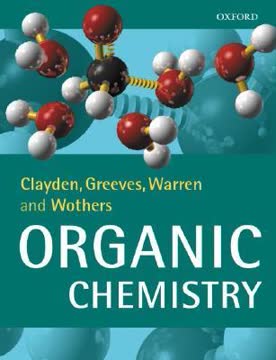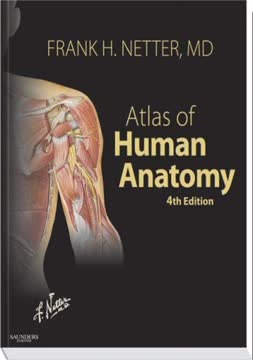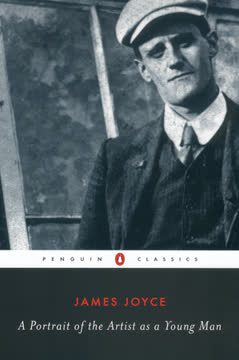Key Takeaways
1. Organic Chemistry Explores Molecular Structure and Reactions
Organic chemistry is something more. It literally creates itself as it grows.
The Science of Molecules. Organic chemistry is the study of carbon-containing compounds, their structures, properties, reactions, and synthesis. It bridges physics, mathematics, and biology to understand the molecular world, from the simplest hydrocarbons to the complex molecules of life.
From Life's Tentative Beginnings to Confident Basis. Beginning as an attempt to understand the chemistry of life, organic chemistry has evolved into a field that creates new materials, dyes, perfumes, and drugs. It is a science that both studies and creates molecules, constantly expanding its understanding and capabilities.
Organic Chemistry is a Creative Endeavor. Organic chemistry is not just about understanding existing molecules but also about creating new ones. This creative aspect has led to the development of plastics, dyes, pharmaceuticals, and other essential materials, improving the quality of life for millions.
2. Drawing Conventions Simplify Molecular Representation
Organic chemistry is a visual, three-dimensional subject and the way you draw molecules shows how you think about them.
Visual Language. Organic chemistry relies heavily on structural diagrams to represent molecules. The way these diagrams are drawn reflects how chemists think about and understand the three-dimensional nature of molecules.
Guidelines for Clarity:
- Chains of atoms should be drawn as zig-zags to represent realistic bond angles.
- Hydrogen atoms attached to carbon atoms are usually omitted for clarity.
- Carbon atoms themselves are often omitted, with line junctions representing carbon atoms.
Balance of Realism and Economy. The goal is to create diagrams that are both realistic and economical, conveying essential information without unnecessary clutter. This allows chemists to communicate effectively and efficiently about complex molecular structures.
3. Spectroscopy Unveils Molecular Architecture
For this reason we first reveal to students the facts which spectroscopy tells us (Chapter 3) before trying to explain them (Chapter 4) and then use them to deduce mechanisms (Chapter 5).
Spectroscopy as a Tool. Spectroscopy is a set of experimental techniques that use the interaction of molecules with electromagnetic radiation to determine their structure. Different types of spectroscopy provide complementary information, from bond lengths and angles to the types of functional groups present.
Key Spectroscopic Methods:
- Mass spectrometry: Determines the molecular weight and atomic composition of a compound.
- Nuclear magnetic resonance (NMR): Reveals the symmetry, branching, and connectivity of the carbon skeleton.
- Infrared (IR) spectroscopy: Identifies the functional groups present in the molecule.
Experiment Before Explanation. By first revealing the facts that spectroscopy tells us, we can then use these facts to deduce mechanisms and understand the structure of molecules. This approach emphasizes the importance of experimental evidence in organic chemistry.
4. Molecular Orbitals Dictate Molecular Shape and Reactivity
The best way to find out how something works is to take it apart and put it back together again, so we started with the tools for expressing chemical ideas: structural diagrams and curly arrows.
Electrons as Glue. Molecules are held together by the attraction between positively charged nuclei and negatively charged electrons. Electrons occupy specific energy levels and spatial arrangements called molecular orbitals.
Molecular Orbitals from Atomic Orbitals:
- Atomic orbitals combine to form bonding and antibonding molecular orbitals.
- Bonding orbitals are lower in energy and promote stability, while antibonding orbitals are higher in energy and destabilize the molecule.
- The shape and energy of molecular orbitals dictate the three-dimensional structure and reactivity of molecules.
Hybridization and Molecular Shape. The hybridization of atomic orbitals (sp, sp2, sp3) determines the geometry of molecules. For example, sp3 hybridization leads to tetrahedral structures, while sp2 hybridization leads to trigonal planar structures.
5. Reaction Mechanisms Describe Electron Flow
The dynamic process by which this happens is called mechanism and is the grammar of organic chemistry—the way that one molecule can change into another.
Chemical Transformations. Chemical reactions involve the transformation of molecules into other molecules. The dynamic process by which this happens is called a mechanism.
Nucleophiles and Electrophiles:
- Nucleophiles are electron-rich species that donate electrons to form new bonds.
- Electrophiles are electron-deficient species that accept electrons to form new bonds.
Curly Arrows as a Language. Curly arrows are used to represent the movement of electrons in reaction mechanisms. They show the flow of electrons from nucleophiles to electrophiles, illustrating how bonds are broken and formed during a reaction.
6. Carbonyl Chemistry: A Central Theme
We shall use a mechanistic classification rather than a structural classification and explain one type of reaction rather than one type of compound in each chapter.
The Carbonyl Group's Importance. The carbonyl group (C=O) is one of the most important functional groups in organic chemistry. It is present in aldehydes, ketones, carboxylic acids, esters, amides, and many other compounds.
Mechanistic Classification. Organic chemistry can be organized according to reaction mechanisms rather than structural classifications. This approach allows us to understand the underlying principles that govern the behavior of different types of compounds.
Nucleophilic Addition to Carbonyls. A key reaction of carbonyl compounds is nucleophilic addition, in which a nucleophile attacks the carbon atom of the carbonyl group, forming a new bond and breaking the π bond. This reaction is fundamental to many important transformations in organic chemistry.
7. Controlling Reactions: Selectivity and Protecting Groups
We will then spend two chapters revisiting some of the reactions you have met before in two chapters on selectivity: how to get the reaction you want to happen and avoid the reaction you don’t.
Selectivity in Organic Reactions. Organic molecules often contain multiple functional groups that can potentially react with a given reagent. Selectivity refers to the ability to control which functional group reacts and how it reacts.
Types of Selectivity:
- Chemoselectivity: Choosing which functional group reacts.
- Regioselectivity: Choosing where a functional group reacts.
- Stereoselectivity: Choosing how a functional group reacts (stereochemistry of the products).
Protecting Groups. Protecting groups are temporary modifications that render a functional group unreactive, allowing other reactions to be carried out selectively. After the desired transformation, the protecting group can be removed to restore the original functional group.
8. Pericyclic Reactions: A Symphony of Orbital Symmetry
All science must be underpinned by evidence, and support for organic chemistry’s claims is provided by spectroscopy.
Cycloadditions. Cycloadditions are a type of pericyclic reaction in which two or more unsaturated molecules combine to form a cyclic product. These reactions involve the concerted reorganization of electrons in a ring, without any charged intermediates.
Woodward-Hoffmann Rules:
- Thermal pericyclic reactions with (4n + 2) π electrons proceed with suprafacial geometry.
- Thermal pericyclic reactions with (4n) π electrons proceed with antarafacial geometry.
Diels-Alder Reaction. The Diels-Alder reaction is a [4 + 2] cycloaddition between a conjugated diene and a dienophile. It is a powerful method for forming six-membered rings with excellent control over stereochemistry.
9. Rearrangements and Fragmentations: Molecular Transformations
We aim to avoid dogma and promote the healthy weighing up of evidence, and on occasion we are content to leave readers to draw their own conclusions.
Rearrangements. Rearrangements are reactions in which the carbon skeleton of a molecule changes. These reactions often involve the migration of a group from one atom to another within the molecule.
Fragmentations. Fragmentations are reactions in which a molecule breaks apart into two or more smaller fragments. These reactions often involve the cleavage of carbon-carbon bonds.
Neighbouring Group Participation. Neighbouring groups can accelerate substitution reactions by stabilizing the transition state. This can lead to rearrangements or retention of configuration.
10. Organometallic Chemistry: Expanding Synthetic Horizons
Transition metals extend the range of organic reactions.
Transition Metals as Catalysts. Transition metals play a crucial role in many organic reactions, acting as catalysts to facilitate a wide range of transformations. They can coordinate with organic molecules, activate bonds, and promote new bond formations.
The 18-Electron Rule. The 18-electron rule is a guideline for predicting the stability of transition metal complexes. It states that stable complexes tend to have 18 valence electrons around the metal center.
Palladium Catalysis. Palladium is one of the most widely used metals in homogeneous catalysis. It is involved in a variety of reactions, including the Heck reaction, cross-coupling reactions, and allylic alkylations.
11. Asymmetric Synthesis: Nature's Mirror and the Chiral Pool
Nature is asymmetric.
Chirality in Nature. Many biological molecules are chiral, meaning they exist as non-superimposable mirror images (enantiomers). Nature often uses only one enantiomer of a chiral molecule, leading to specific biological effects.
The Chiral Pool. The chiral pool refers to the collection of readily available, enantiomerically pure natural products that can be used as starting materials for asymmetric synthesis.
Asymmetric Catalysis. Asymmetric catalysis involves the use of chiral catalysts to promote the formation of a single enantiomer of a chiral product. This is a powerful method for creating complex molecules with high stereocontrol.
12. Organic Chemistry's Role in Life and the Future
Science advances through interaction between disciplines.
Primary Metabolism. Primary metabolism encompasses the essential biochemical processes that sustain life, including the synthesis and degradation of nucleic acids, proteins, sugars, and lipids.
Natural Products. Natural products are organic compounds produced by living organisms. They often have complex structures and diverse biological activities, making them valuable sources of new drugs and materials.
Interdisciplinary Science. Organic chemistry is increasingly interdisciplinary, with strong connections to biology, medicine, materials science, and other fields. The future of organic chemistry lies in its ability to address complex challenges in these areas, such as developing new treatments for diseases and creating sustainable materials.
Last updated:
FAQ
1. What is Organic Chemistry by Jonathan Clayden about?
- Innovative, evidence-based approach: The book presents organic chemistry as a science built on evidence, focusing on understanding mechanisms and concepts rather than rote memorization of facts.
- Mechanistic and structural emphasis: It organizes content by reaction mechanisms and molecular structure, using curly arrows and molecular orbital theory to explain how and why reactions occur.
- Comprehensive coverage: Topics span from fundamental concepts like atomic structure and bonding to advanced areas such as spectroscopy, synthesis, biological chemistry, and natural product biosynthesis.
- Real-world and laboratory relevance: The text connects organic chemistry to real laboratory problems and biological systems, making it relevant for students, researchers, and professionals.
2. Why should I read Organic Chemistry by Jonathan Clayden?
- Bridges chemistry and biology: The book uniquely integrates organic chemistry principles with biological processes, making it essential for students in chemistry, biochemistry, and related fields.
- Deepens mechanistic understanding: It emphasizes understanding reaction mechanisms, enabling readers to predict and rationalize organic reactions rather than just memorize them.
- Practical and modern perspective: The text uses real examples from laboratory and pharmaceutical chemistry, including drug synthesis and natural product biosynthesis, to illustrate concepts.
- Develops scientific thinking: By focusing on evidence, spectroscopy, and critical analysis, the book trains readers to weigh evidence and avoid dogma in scientific reasoning.
3. What are the key takeaways from Organic Chemistry by Jonathan Clayden?
- Mechanisms are central: Understanding organic reactions through mechanisms, especially using curly arrows and molecular orbital theory, is fundamental to mastering the subject.
- Structure determines function: The book shows how molecular structure, including stereochemistry and conformation, dictates chemical and biological behavior.
- Spectroscopy is transformative: Modern spectroscopic methods (NMR, IR, MS) are essential for structure determination and underpin much of organic chemistry.
- Organic chemistry underlies life: The same principles that govern laboratory reactions also explain biological processes, drug action, and natural product biosynthesis.
4. How does Organic Chemistry by Jonathan Clayden teach students to draw and communicate organic structures effectively?
- Emphasis on clarity and economy: Students are encouraged to use zig-zag chains, omit unnecessary hydrogens and carbon symbols, and highlight functional groups for clear communication.
- Use of color and symbols: The book employs color coding (e.g., red for structures, black for key atoms or arrows) to focus attention and aid understanding.
- Functional group focus: Organic molecules are presented as hydrocarbon frameworks with functional groups that determine their reactivity and biological roles.
- Mechanistic diagrams: Curly arrows and orbital representations are used extensively to illustrate electron flow and reaction mechanisms.
5. What is the role of spectroscopy in structure determination according to Organic Chemistry by Jonathan Clayden?
- Revolutionized structure elucidation: Spectroscopy, especially NMR, has made rapid and accurate determination of molecular structure possible, transforming organic chemistry.
- Key techniques explained: The book details mass spectrometry for molecular weight, NMR (¹H and ¹³C) for carbon and hydrogen environments, and IR for functional group identification.
- Integrated approach: Combining these methods allows for quick and reliable identification of unknown compounds, with NMR highlighted as the most powerful tool.
- Evidence-based reasoning: Spectroscopic data are used to reveal facts before explaining them, teaching students to deduce structures and mechanisms scientifically.
6. How does Organic Chemistry by Jonathan Clayden explain molecular structure, bonding, and shape?
- Atomic and molecular orbitals: Electrons occupy quantized atomic orbitals, which combine to form molecular orbitals that explain bonding and molecular geometry.
- Hybridization and geometry: The book explains sp³, sp², and sp hybridization in carbon, accounting for tetrahedral, trigonal planar, and linear shapes.
- Molecular orbital theory: Bonding and antibonding orbitals, σ and π bonds, and polarization effects are discussed to predict structure and reactivity.
- Stereochemistry and conformation: The spatial arrangement of atoms, including chirality and conformational analysis, is emphasized as crucial for understanding properties and reactions.
7. What are nucleophiles and electrophiles, and how does Organic Chemistry by Jonathan Clayden define and use these concepts?
- Nucleophiles: Electron-rich species (often with lone pairs or negative charge) that donate electrons to electron-deficient centers.
- Electrophiles: Electron-poor species (often with positive charge or empty orbitals) that accept electrons to form new bonds.
- Orbital interactions: The book explains reactions in terms of HOMO (nucleophile) and LUMO (electrophile) interactions, focusing on energy and symmetry.
- Predicting reactivity: Understanding nucleophiles and electrophiles is essential for anticipating reaction pathways and mechanisms throughout the text.
8. How does Organic Chemistry by Jonathan Clayden approach reaction mechanisms and the use of curly arrows?
- Curly arrows as language: Curly arrows are used to depict electron flow, forming the dynamic language of organic reaction mechanisms.
- Mechanism determination: The book teaches how to deduce mechanisms from experimental evidence such as kinetics, stereochemistry, and isotope effects.
- Mechanistic grammar: Mechanisms are presented as the grammar of organic chemistry, explaining how molecules transform and why certain products form.
- Practice and mastery: Detailed rules and numerous examples help students master drawing and interpreting mechanisms, a core skill in organic chemistry.
9. What are the key differences between SN1 and SN2 mechanisms in nucleophilic substitution as explained by Organic Chemistry by Jonathan Clayden?
- SN1 mechanism: Proceeds via a two-step process with carbocation intermediates; rate depends only on substrate concentration and leads to racemization.
- SN2 mechanism: Involves a one-step, concerted backside attack; rate depends on both nucleophile and substrate, causing inversion of configuration.
- Structural and solvent effects: Tertiary carbons and polar protic solvents favor SN1, while primary/methyl carbons and polar aprotic solvents favor SN2.
- Nucleophile and leaving group roles: Strong nucleophiles and good leaving groups are crucial for SN2, while leaving group quality is important for both mechanisms.
10. How does Organic Chemistry by Jonathan Clayden explain conformational analysis and its importance?
- Conformations vs. configurations: The book distinguishes between conformations (interconvertible by bond rotation) and configurations (require bond breaking).
- Ring strain and cyclohexane: Detailed analysis of ring strain, chair/boat conformations, and axial/equatorial positions in cyclohexane is provided.
- Energy barriers and NMR: Barriers to rotation and their effects on molecular behavior are linked to NMR observations and reactivity.
- Impact on reactivity: Conformation influences reaction outcomes, stereochemistry, and selectivity, making it essential for understanding organic reactions.
11. What is the significance of aromaticity and electrophilic/nucleophilic aromatic substitution in Organic Chemistry by Jonathan Clayden?
- Aromaticity defined: Aromatic compounds have delocalized π electrons in cyclic, planar systems, following Hückel’s rule for stability.
- Electrophilic aromatic substitution (EAS): The book explains mechanisms, regioselectivity, and the influence of substituents on reactivity and product distribution.
- Nucleophilic aromatic substitution (NAS): Mechanisms such as addition–elimination, SN1 via diazonium salts, and the benzyne pathway are covered, with emphasis on activating groups and leaving groups.
- Practical examples: Real-world reactions, including drug synthesis and functionalization strategies, illustrate the importance of aromatic substitution in organic chemistry.
12. How does Organic Chemistry by Jonathan Clayden connect organic chemistry principles to biological systems and natural product synthesis?
- Organic chemistry of life: The book shows how fundamental organic reactions underpin biological processes, including enzyme catalysis, cofactor function, and biosynthesis.
- Sugars, lipids, and proteins: Detailed explanations of sugar chemistry, fatty acid and polyketide biosynthesis, and protein structure/function are provided.
- Natural product biosynthesis: Pathways for alkaloids, terpenes, and steroids are described, linking laboratory synthesis to nature’s strategies.
- Drug discovery and synthesis: The text highlights the role of organic chemistry in designing and synthesizing pharmaceuticals, emphasizing interdisciplinary collaboration and real-world impact.
Review Summary
Organic Chemistry by Jonathan Clayden is highly praised as an engaging and comprehensive textbook. Readers appreciate its clear explanations, visual appeal, and ability to make organic chemistry interesting. Many consider it the best resource for both beginners and experienced chemists. The book's approach of explaining concepts rather than just listing reactions is particularly valued. Some criticism exists regarding the depth of certain topics and the occasional overwhelming amount of information. Overall, reviewers consistently rate it highly, often calling it the "Bible" of organic chemistry.
Download PDF
Download EPUB
.epub digital book format is ideal for reading ebooks on phones, tablets, and e-readers.








